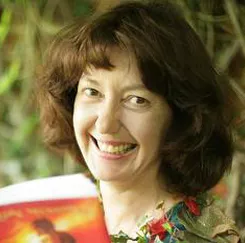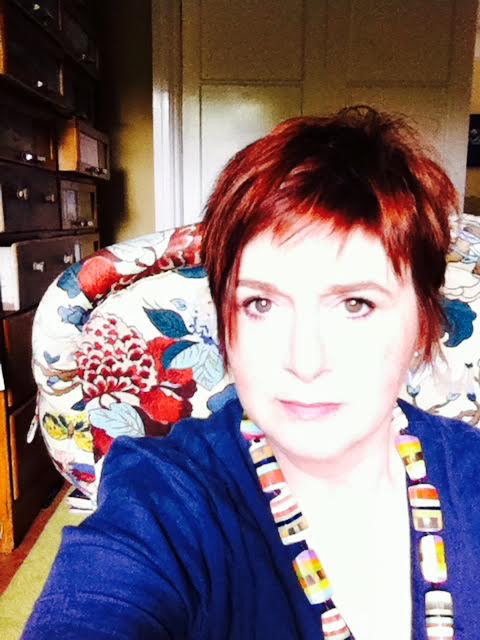Title of the work
Country of the First Edition
Country/countries of popularity
Original Language
First Edition Date
First Edition Details
Geraldine McCaughrean, The Bronze Cauldron. London: Orion Children’s Books, 1997, 130 pp.
ISBN
Genre
Fiction
Illustrated works
Instructional and educational works
Myths
Short stories
Target Audience
Children
Cover

We are still trying to obtain permission for posting the original cover.
Author of the Entry:
Allison Rosenblum, Bar-Ilan University, allie.rose89@gmail.com
Peer-reviewer of the Entry:
Lisa Maurice, Bar-Ilan University, lisa.maurice@biu.ac.il
Elizabeth Hale, University of New England, ehale@une.edu.au

Courtesy of the Author.
Geraldine McCaughrean
, b. 1951
(Author)
McCaughrean is a British novelist who currently resides in Berkshire, England. She is a prolific writer, who wrote of over 170 books – mostly children’s books but also several historical novels for adults. She won numerous awards for her books. In addition she also wrote a play for the radio and stage-plays. She grew up in North London and studied at Christ Church College of Education, Canterbury.
McCaughrean was the only author who won the Whitbread Children’s Book Award three times; she won it for her children’s novels: A Little Lower than the Angels (1987), Gold Dust (1993) and Not the End of the World (2004).
Sources:
Official website (accessed: May 28, 2018).
Profile at the literature.britishcouncil.org (accessed: May 28, 2018).
Bio prepared by Ayelet Peer, Bar-Ilan University, ayelet.peer@gmail.com
Questionnaire
1. What drew you to writing / working with Classical Antiquity and what challenges did you face in selecting, representing, or adapting particular myths or stories?
I loved the Classic myths as a child, though the books were a bit dull, illustrated with Greek statuary or Roman urns. There was a resurgence of interest in publishing them for children at the time I was newly surfacing as an author, so naturally I leapt at the chance to retell them. The illustrations were a lot better this time round.
The choosing of stories is largely guided by which are best known and (especially nowadays) those which feature on the National Curriculum. That, in turn, is largely guided by which are not too salacious or amoral. The Greek myths win out every time in terms of what the publishers choose to publish and what the schools choose to teach. I am particularly fond, however, of the Epic of Gilgamesh and like to harp on about that whenever I get the chance.
2. Why do you think classical / ancient myths, history, and literature continue to resonate with young audiences?
It is one of the few chances children get to be treated like adults. Since the stories were originally told to a diverse audience, and they are distinctly not "kiddies’ stories", young readers/listeners are for once given a glimpse of adults (and gods) behaving badly, death, battle, love, fate and so on, as well as identifying with heroes, superhuman beings and adventurers, all in a heady, sun-and-sea setting. Other "educational" retellings I am asked to write (such as fairy tales) come with a prohibition list of no-nos – knives, soldiers, witches, religion, war, sex, alcohol... All of that goes out of the window with Myth because (of course) such things are the substance of Myth. They are also the substance of Life and there are important things to be said about them – passed on from one generation to the next by means of story.
The sheer strangeness of times-long-gone are intriguing to children. I have never seen the need for "contemporary relevance" when it comes to entrancing children with Story. They can, after all, dart imaginatively through Time and Space with more ease than adults, and relish unquestioningly the most mind-boggling fantasy without turning a hair.
3. Do you have a background in classical education (Latin or Greek at school or classes at the University?) What sources are you using? Scholarly work? Wikipedia? Are there any books that made an impact on you in this respect?
I’m no classicist. I did do Latin to O-level at school, but none of it has stuck unless residually in my spelling. I wrote a collection of 101 Myths and Legends from Round the World which helped me see "Classical" myth in its global context, and how its influence travelled far farther afield than the Greeks themselves ever did.
For sources, I don’t go to other children’s versions, for obvious reasons, but to Robert Graves or adult encyclopaedias of Mythology or Penguin versions of the epics.
4. Did you think about how Classical Antiquity would translate for young readers?
The arrant misogyny and gynophobia of the ancient Greeks are an undoubted problem. Almost every monster is female, almost every female is scheming or dangerous, a snake under her skirts, or only there to be conquered and bedded. Heroes like Hercules get through droves of women – and then there are his dubious shield-bearing beloved boys...
I do an exercise in schools whereby Perseus goes off to kill Medusa clad in all the language of heroism and admirable virtues... and then, as the kid raises his sword to strike, I point out that, by the way, he has abandoned his mother in her hour of need because he fell for a flattering trick and boasted he could kill the gorgon, so has flown off to kill a woman he has never met and knows nothing about – a woman who was transformed and deformed through no fault of her own, and – ooo – who happens to be pregnant with twins when Perseus slashes her head off her shoulders. It’s a nice exercise in "viewpoint". ... But of course in retelling the myth in writing I can’t do that. I have to be true to the stories I loved myself as a child, and trust to the appeal that has kept them alive and popular for thousands of years.
5. Writers are often more "faithful" to originals in adapting its spirit rather than being tied down at the level of detail – is this something you thought about when writing your stories?
I do feel quite strongly that the tradition – the etiquette, if you like – of storytelling is that while the storyteller has charge of the story it is theirs to do with as they like. Which source should I go back to for perfect accuracy, after all? The oldest? The first-time told? Hardly. Where a culture’s religion is involved, then it’s wrong to mess with a mythic story. But there can be very few Olympian-worshippers these days I could offend by missing out a detail or two. The patchwork-quilt way that the canon of Greek myth grew gives rise to lots of anomalies anyway – e.g. Hercules doing his deal with Atlas at least two generations after Perseus turned Atlas into a mountain.
All the same... when TV series or novelizations credit the wrong heroes with the wrong adventures, I go ape!
As for details... Those three drops of olive oil that Psyche spills on to Cupid’s shirt as she takes a peek at him after dark... when you see how they survived over the centuries to turn up as three drops of blubber oil in a telling of East of the Sun and West of the Moon... well it makes you believe that myths have DNA that will survive somehow despite the worst time and interfering storytellers can do to them. Details like that are truly precious.
Prepared by Ayelet Peer, Bar-Ilan University, ayelet.peer@gmail.com

Courtesy of Bee Willey.
Bee Willey (Illustrator)
Bee was born in London and spent most of her childhood in France. She attended the Bath Academy of Art. In her career since graduation she has worked as a freelance illustrator for numerous clients, creating illustrations for a wide range of books – including over twenty for children – and also posters, montage, magazines, campaigns and emojis. The "sidelights" for Willey at encyclopedia.com include the comment that "her stylistic art has been credited for its eccentric and energetic design". She was shortlisted for the Kate Greenaway Medal in 2003 for Bob Robber and Dancing Jane. The many authors she has worked with include Shahrukh Husain, for whom she is the illustrator of Egypt (Evans 2004), Rome (Evans 2004), Greece (Evans 2004), Indian Myths (Evans 2005), The Vikings (Smart Apple Media 2005) and African Myths (Evans 2006).
Sources:
Profile at the Walker Books Australia website (accessed: June 28, 2018).
Profile at the illustrationcupboard.com (accessed: October 5, 2017).
Profile at the www.wordsandpics.org (accessed: June 28, 2018).
Bee Willey’s personal website (accessed: August 15, 2019).
Profile at encyclopedia.com (accessed: September 2, 2019)
Bio prepared by Allison Rosenblum, Bar-Ilan University, allie.rose89@gmail.com
Summary
The book offers a retelling of myths from around the world, suitable for children of all ages. (Among the myths we have stories from Mayan culture, Papua New Guinea, Inuit tale, Japanese and more).
Analysis
Retelling of myths from around the world, suitable for children of all ages. The myths cover a broad range of themes and tones, but are all relatively light-hearted, making them appropriate for younger children as well as older readers. Whereas the first two anthologies in this series, The Golden Hoard and The Silver Treasure, take a more focused approach at explaining the gods’ influence in each story, The Bronze Cauldron highlights mankind’s sense of control, the power they have over their own lives sometimes in defiance of the gods, like Taru who decides to go out and fight Illuyankas, or Sisyphus who thought he could outsmart the gods.
All the lore collected in The Bronze Cauldron has been passed down orally through the generations, and McCaughrean writes them down here in a dramatic yet fluid way, inserting moments of humor to take away from the darker elements of human nature found in stories like the Mayan myth about Hun-Apu and Xbalanque or the English legend about Billy.


